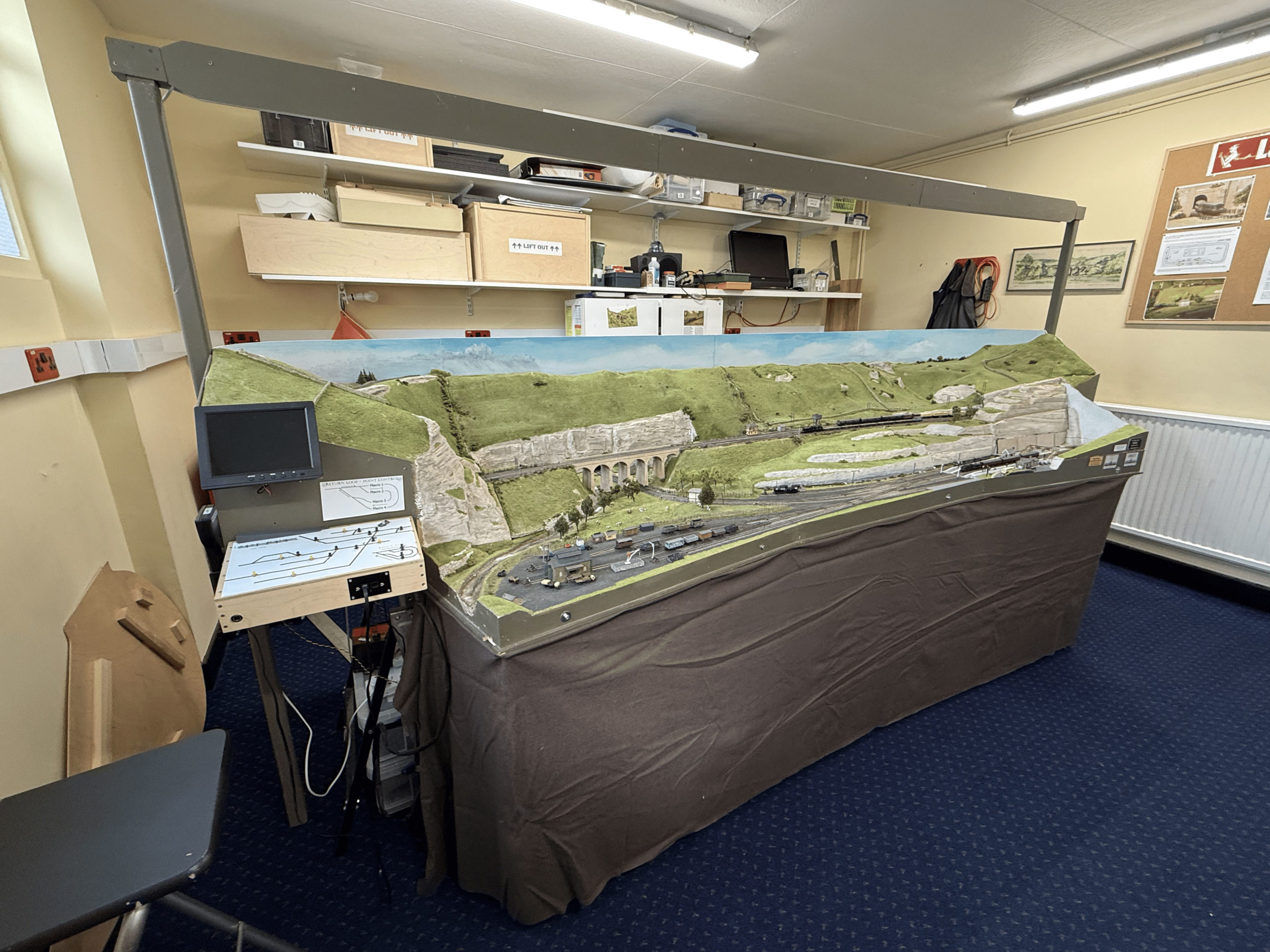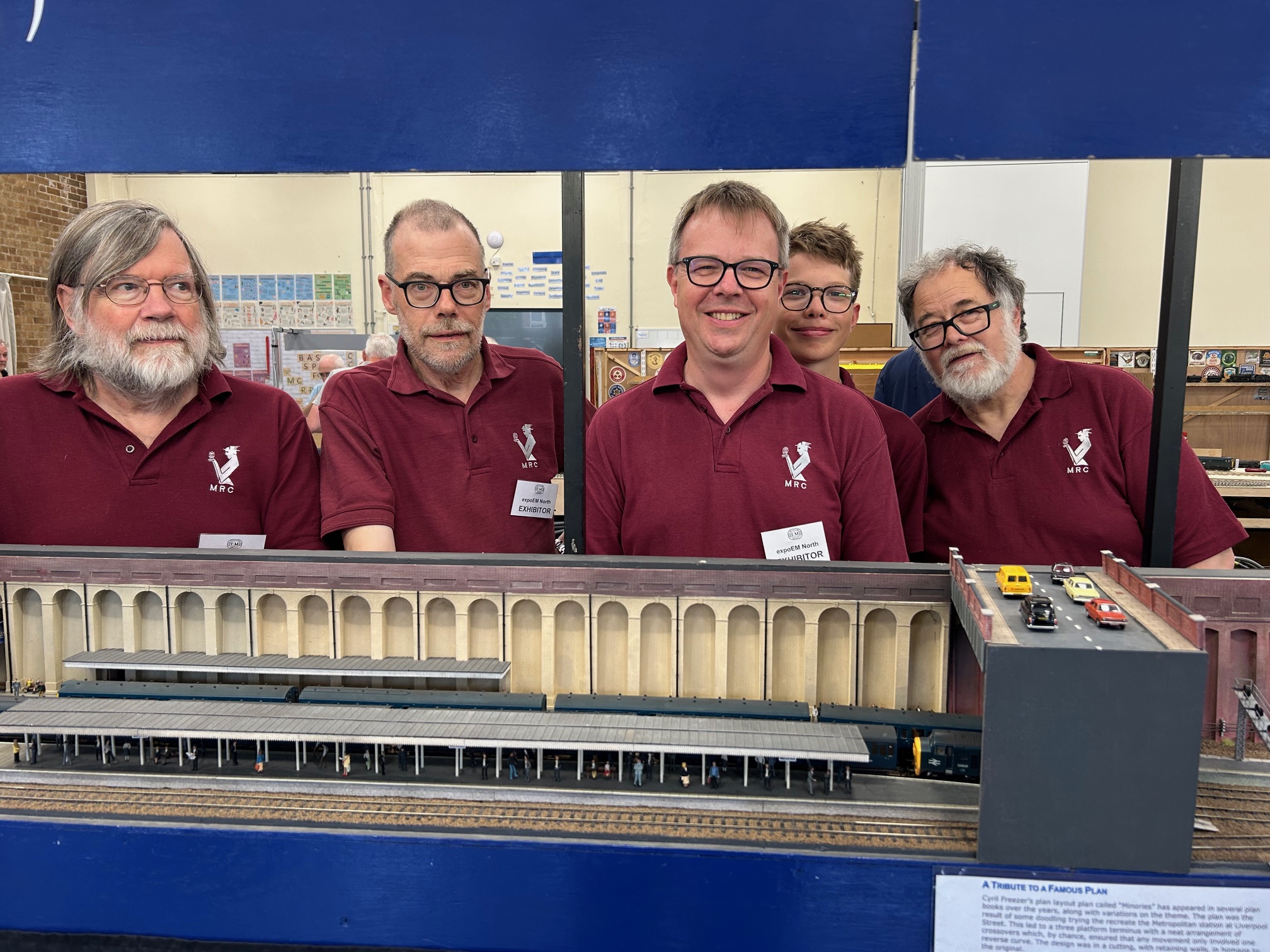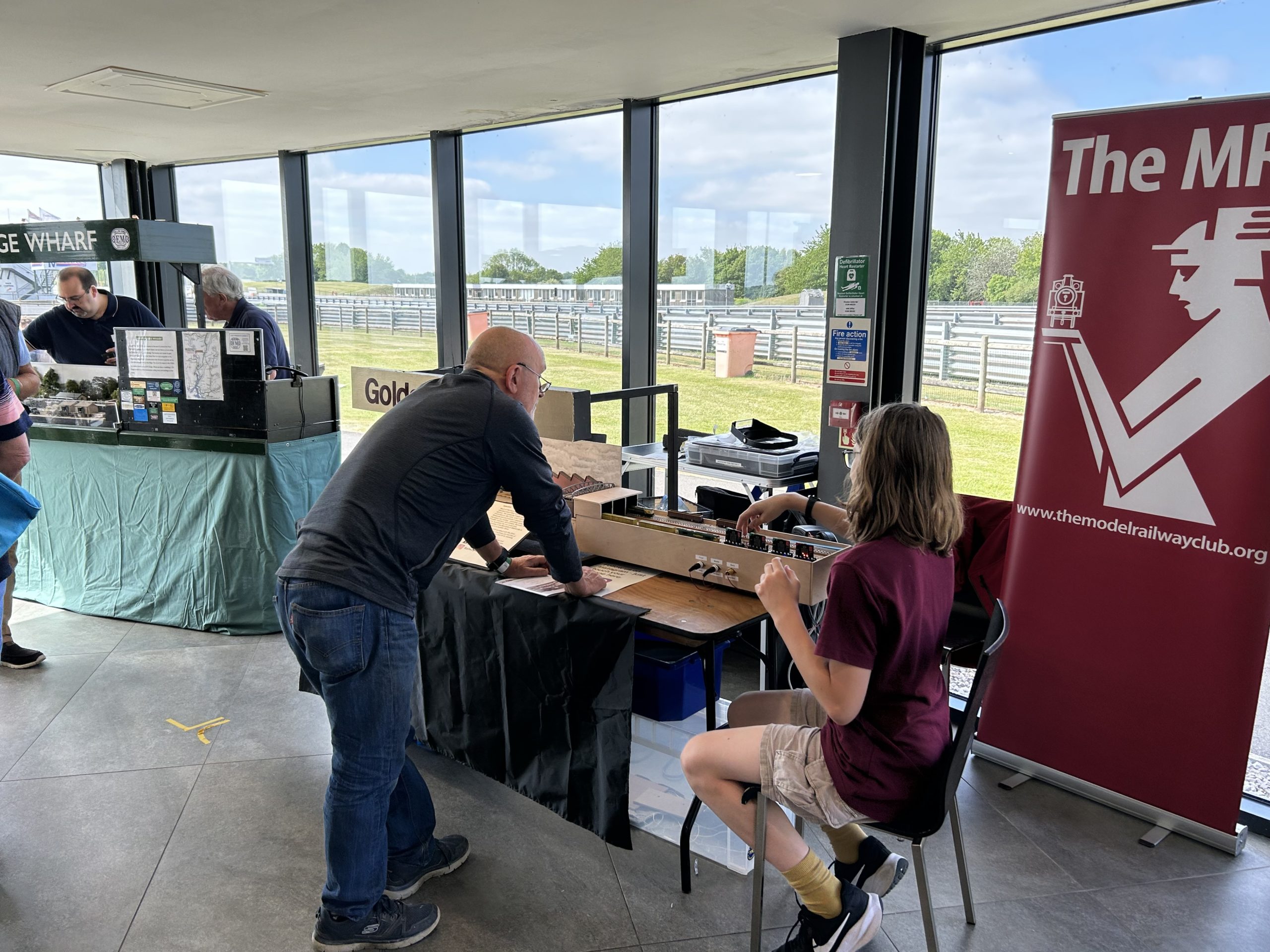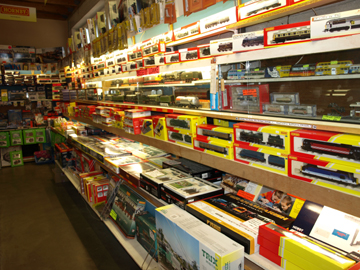Figuring out the USATC’s painted numbers
Ben Weiner
12th September 2020
5 minutes
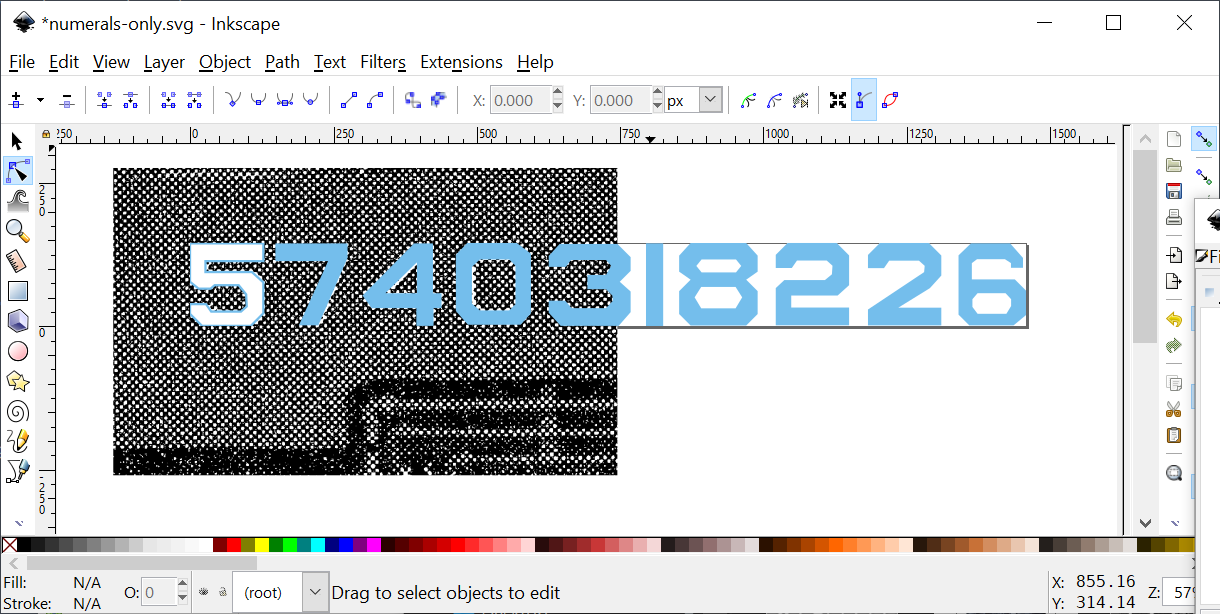
Or: fixing a factory shortcut
The subject: Roco’s recent H0 model of the S160, which was a utility locomotive ordered by the United States Army Transportation Corps (USATC, set up in 1942) in preparation for the invasion of Europe as the second world war progressed.
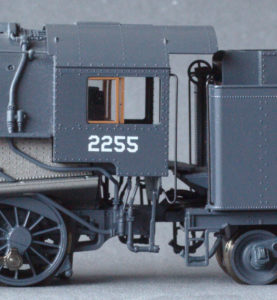
The model meets the high standards currently expected in the market. It has beautiful cab detailing inside and out. A good job has been made of connecting loco and tender solidly without spoiling the view of the area under the cab, which in contrast to the design of British steam locos is a large open space in which water, air and vacuum pipes dangle.
But what about those numbers?
What Roco did when it came to cabside numbering is a bit disappointing. Having researched the loco down to the last rivet, they have applied numbering with little reference to the prototype. This is probably true for many commercial models, but the trouble is the numbers on an S160 were very large, and very bold, and the error is as obvious as a stovepipe chimney on a Castle class.
Then they added insult to injury. They chose loco number 2255, but couldn’t find a font ‘off the shelf’ with a figure 5 that they liked. You can see more clearly what they did instead in the photo below.
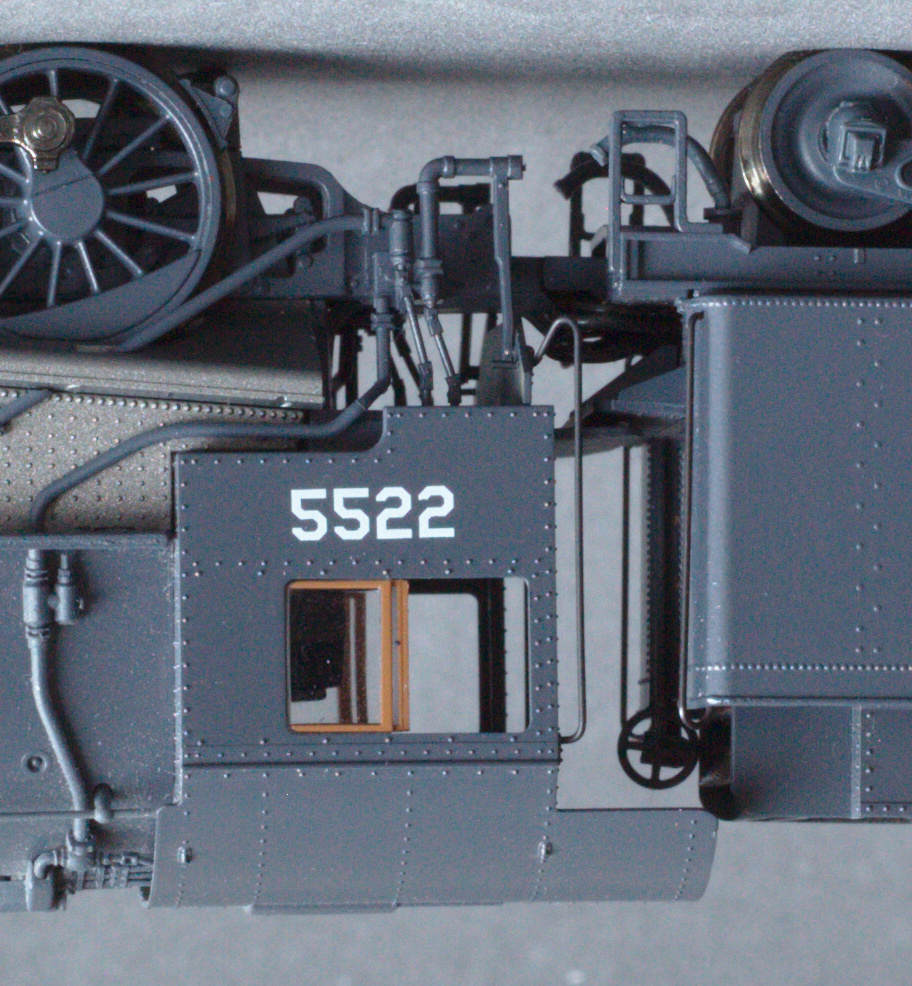
It’s a clever way to make 1 do the work of 4 (or 2 do the work of 5). But this is falling at the very last fence! There are plenty of photos of the S160, so we can do a little research and perhaps come up with something more worthy of a first-rate commercial model.
My sources included: Over here, the story of the S160. Big Jim Publishing, 1980. Züge der Alliierten, Eisenbahn Kurier-Verlag, 2017. There are more photos in Eisenbahn Kurier in a recent two-part article: 3/2020 and 4/2020. Also, in private collections such as the French Railway Society’s online photo archive (accessible to members only). Incidentally there are several preserved S160s in the UK, including at least two that have a jazzed up and entirely new livery complete with chrome numbers on the cabside.
The Wikipedia article on the S160 includes a works photo showing the numbers clearly
Lettering: the prototype
The lettering was painted freehand, probably with chalked guidelines, based on a set of simple patterns. We can tell this because the figures on every loco are different, but they all share the same proportions and style. It is also the quickest way to get the job done to an acceptable standard.
Creating letters digitally
Our goal is to create a set of transfers to re-number the loco. It would be possible draw the letters large scale and reduce them photo-mechanically, create a master, and then have that printed onto decal paper. But for decades the computer has been at the heart of print graphics, and that’s really what this job is about. It is an area where I have professional experience, and I chose a familiar route. But the software tools I used are open source so they are, in theory, available to anyone who can use a computer.
Taking in the source material with Inkscape
Inkscape, an open source drawing program, is ideal for roughing out the numbers. One by one the documentary photo scans were placed in an Inkscape document and scaled so the figures were the same general size, and the shapes of the letters were sketched over them as vector graphics.
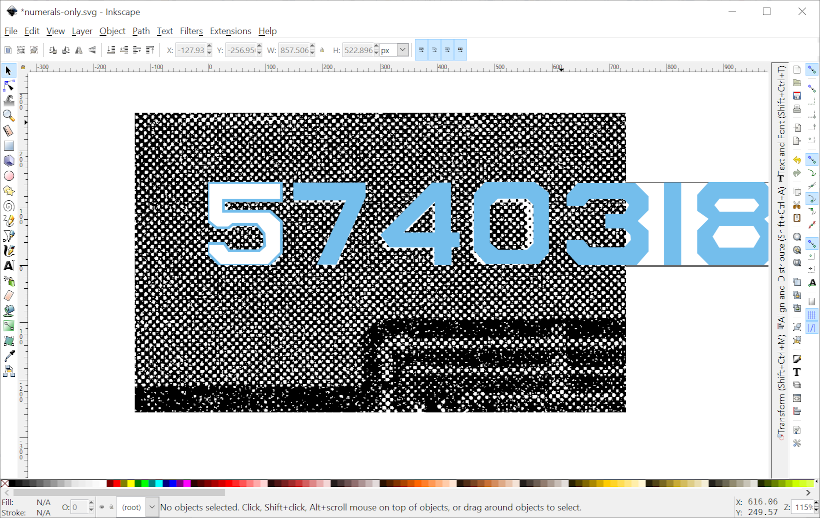
Inkscape allows vector graphics to be created and edited, and is the ideal way to start the process of generating vehicle numbers
What is a vector graphic?
A vector graphic is a way to represent a graphical form as an outline composed of two or more points joined by lines, where the lines are never stored as pixels but as vector data that describes the direction and curvature of the line. These can be drawn by computer software at any scale without losing resolution, so they never become blurred. They can also be edited without affecting anything else around them, so for example you can delete one without damaging anything else in the drawing. If you were using a photo editor, this would be impossible.
Creating letters with FontForge
Almost all modern computer fonts are made up of vectors too. The vectors made in Inkscape were imported and then cleaned up to their final forms using the tools in FontForge, which is an open source font editing program. The tools in FontForge make it a very good program not only for assembling characters into a font but also for forming the shapes. There are two key differences between Inkscape and FontForge that matter here: firstly, FontForge works with individual letters one at a time and secondly, it has all the features needed to put them all together into a font.
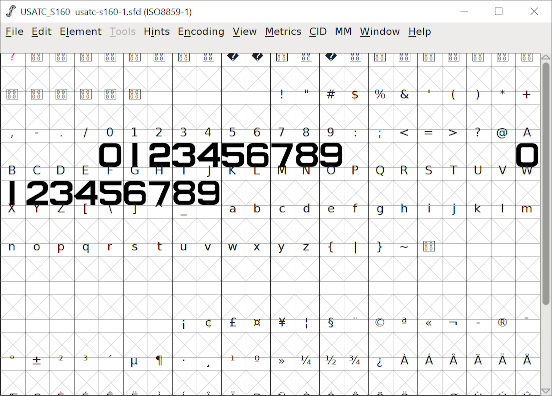
FontForge shows all the characters in a font on a grid. There are, potentially, thousands!
In this case, the figures needed to look as if painted quickly but not without any skill or attention. One of the basic ideas of a font is that the letters are all identical. This means they don’t easily reproduced the slight differences between each repetition of the same character that happens when lettering is done by hand. One trick is to produce several variants of each character. If there is no need for the letters A-Z then alternatives can go into those slots in the font, so I have a second set of numbers in slots A-J. I haven’t come up with alternatives for all the figures yet.
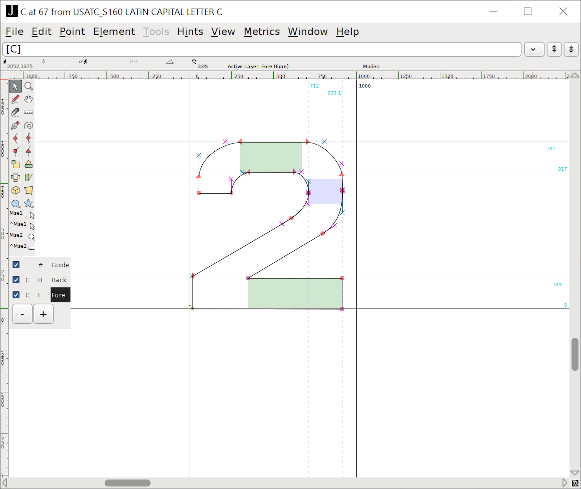
The glyph editor window is used to do detail editing of a single character from a font
The result
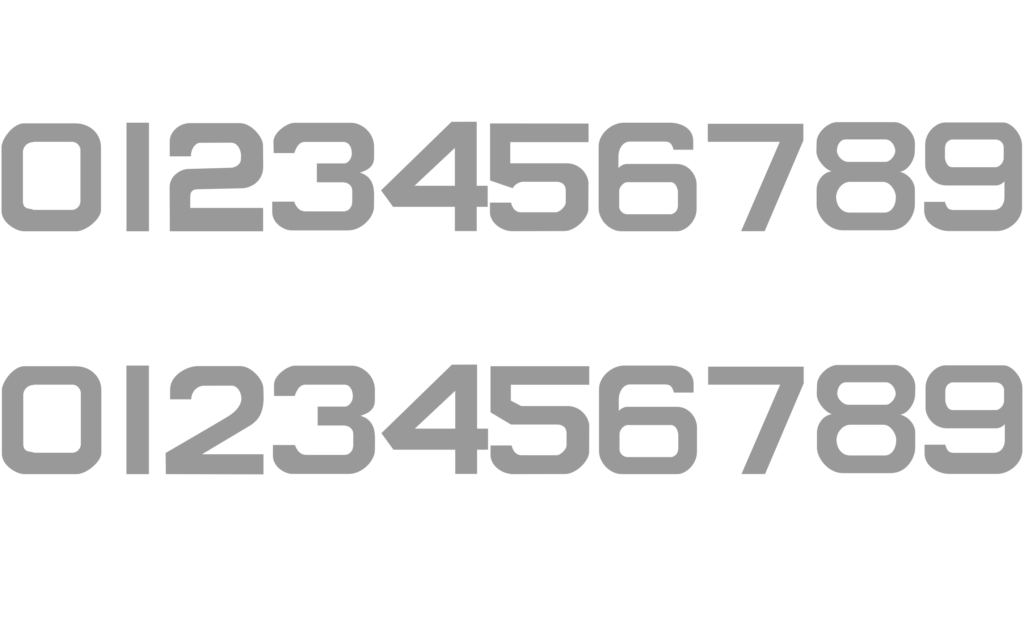
Next steps
To get the letters onto the model, we have to make a transfer sheet and then find a way to print it. These turn out to be big topics in their own right, so watch this space. And by the way, several years ago I made some rather more conventional fonts using tools like Inkscape and FontForge. You can find information about these on my web site http://readingtype.org.uk, you can find the source code for several of the fonts on the code sharing web site Github, and you can use them by going to https://fonts.google.com.
Thursday Track Nights
We are open on Thursday evenings from 7pm to 9pm at our Keen House clubrooms. Visitors are welcome, please come along and introduce yourself.
Address:
Keen House, 4 Calshot Street, London, N1 9DA
Become a member
